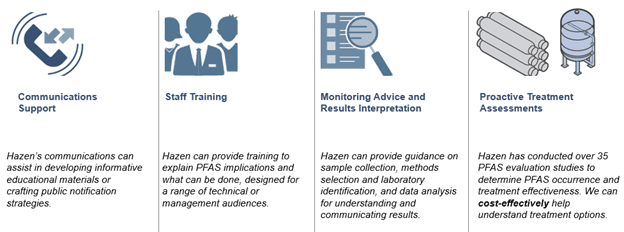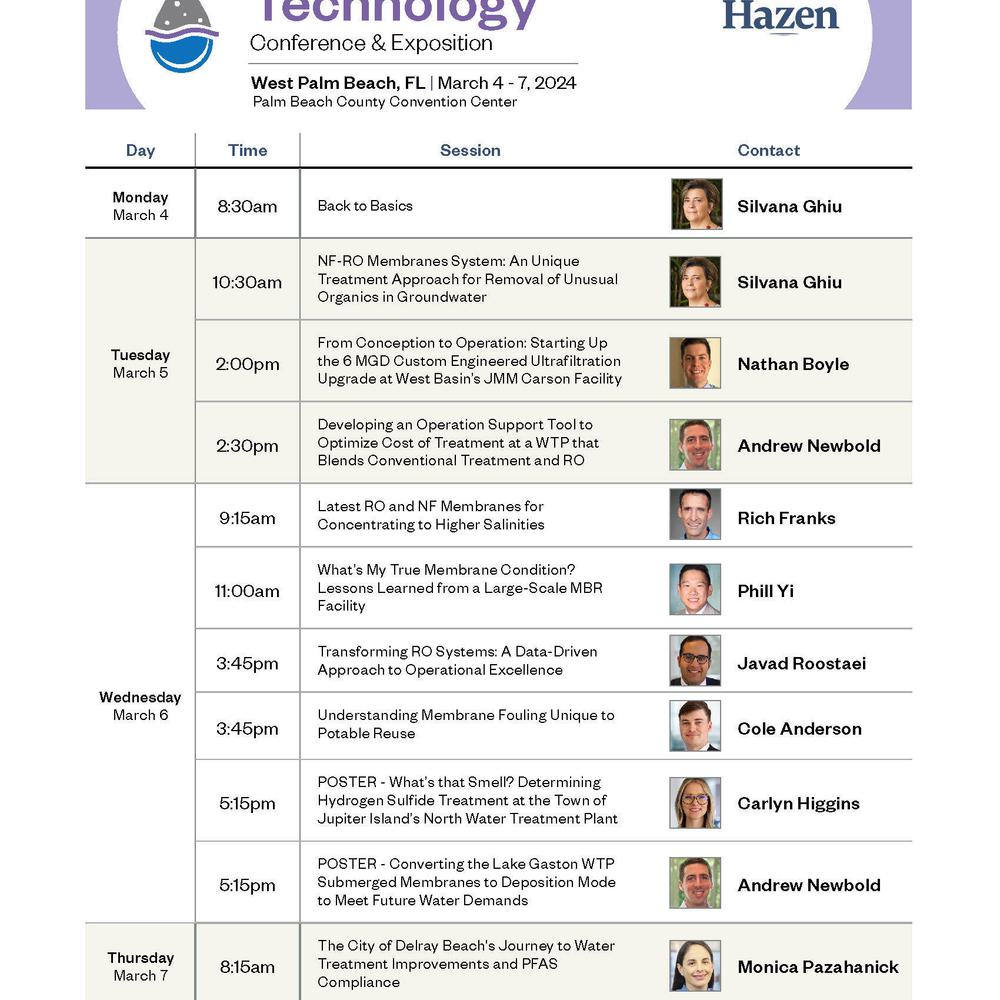The New PFAS Health Advisories: What You Need to Know
Last Modified May 16, 2023
In mid-June 2022, EPA announced Health Advisories (HAs) for four separate PFAS. HAs are non-enforceable and non-regulatory levels that help inform state agencies and public health officials of the health effects of certain chemicals.
Final HAs were set for GenX (10 ppt, or ng/L) and PFBS (2,000 ppt), in addition to new interim HAs for PFOA (0.004 ppt) and PFOS (0.02 ppt). These values for PFOA and PFOS are much lower than the previous HAs of 70 ppt (combined) and are far below current measurement detection limits. For evaluating public health risks, these HAs assume 70 years of exposure time to these chemicals and considered health effects during a sensitive developmental life stage (e.g., childhood vaccination effectiveness).
This announcement comes in advance of an expected PFAS National Primary Drinking Water Regulation scheduled for the Fall of 2022. While expected to focus on PFOA and PFOS, EPA has indicated willingness to consider several future options, including regulating by treatment technique, or the possibility of regulating PFAS by group. Regulating by treatment technique requires utilities to employ a particular procedure or maintain a level of technological performance to ensure control of a contaminant.
In coming years (2023 – 2025), all drinking water systems larger than 3,300 customers will need to sample for PFAS, under the Fifth Unregulated Contaminant Monitoring Rule (UCMR5). In advance of the UCMR5, EPA recommends that systems test for PFAS in their water supplies and encourages drinking water utilities that find PFAS in their drinking water to take steps to inform residents; undertake additional monitoring to assess the level, scope, and source of contamination; and examine steps to reduce exposure.
Hazen recently led development of a communications toolkit for the Water Research Foundation that utilities can use to help communicate with customers on managing their exposure to PFAS. Hazen is also conducting research with utilities and universities on PFAS removal technologies, focusing on cradle-to-grave considerations including disposal options for residuals. We are already providing support services for many utilities navigating the changing landscape, including those shown in the graphic below.
Related Topics:

Additional Resources
- EPA News Release Announcing PFAS HAL – EPA Announces New Drinking Water Health Advisories for PFAS Chemicals, $1 Billion in Bipartisan Infrastructure Law Funding to Strengthen Health Protections | US EPA
- EPA Drinking Water HAL for PFAS Fact Sheet – Drinking Water Health Advisories for PFAS Fact Sheet for Communities – June 2022
- EPA Technical Fact Sheet – Drinking Water HALs for Four PFAS
- EPA Fifth Unregulated Contaminant Monitoring Rule Fact Sheet
- Water Research Foundation PFAS Risk Communication Tool Kit – PFAS One Water Risk Communication Messaging for Water Sector Professionals
- How EPA Regulates Drinking Water Contaminants
Frequently Asked Questions
What are PFAS?
Per- and polyfluoroalkyl substances (PFAS) are a large group of chemicals used since the 1940s in common household and commercial products. PFAS
have unique chemical properties and are often used to keep food from
sticking to cookware. They also make clothes, carpets, and furniture
resistant to water and stains.
Why is EPA releasing Health Advisories for PFAS in drinking water?
PFAS are slow to break down in the environment
and can move far from their original use areas. The manufacturing and
use of products with PFAS puts PFAS into the environment, where, over time, they may end up in drinking water supplies.
When will EPA issue MCLs for PFAS?
The Agency expects to release the draft MCL at the end of calendar year 2022.
What is the difference between a PFAS MCL and the new HA?
The EPA frequently uses HAs in the development of MCLs. HAs are theoretical levels of exposure at which no health effects are anticipated. MCLs are developed with practical constraints such as treatability and analytical capability. MCLs are also based on probability of an adverse health effect based on 70 years of consumption above the MCL.
What are the health risks of ingesting PFAS?
Scientists are studying the health effects of elevated PFAS
blood levels. Preliminary research indicates that health effects may
include certain types of cancer, high cholesterol, and decreased vaccine
response in children. Because of their prevalence in our homes from
products we purchase, as well as environmental exposure via the air,
water, and dust, virtually every person in America has a detectable
level of PFAS in their blood.
What can my utility do now to begin preparing?
In the next three years, all drinking water systems larger than 3,300 customers will need to sample for PFAS, under the Fifth Unregulated Contaminant Monitoring Rule (UCMR5). In advance of the UCMR5, EPA recommends that systems begin testing for PFAS, and utilities that find PFAS
in their drinking water should take steps to inform residents,
undertake additional monitoring to assess the level, scope, and source
of contamination, and examine steps to reduce exposure.











